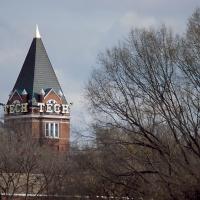What do the cylinder in an internal combustion engine and the four-millimeter-long creature, Spirostomum ambiguum, have in common? Surprisingly, quite a bit. Both are similarly shaped. Both shrink to a fraction of their size in an instant. And both release about the same amount of power output per cubic centimeter in volume. But for all we know…
Georgia Institute of Technology Professor Nga Lee “Sally” Ng has earned a $12 million grant from the National Science Foundation (NSF) Mid-Scale Research Infrastructure program to provide high time-resolution (every 1 to 15 minutes), long-term measurements of the properties of atmospheric particulates known as aerosols, which have significant…
Vastly different than conventional military weapons and aircraft, hypersonics systems are game-changing for national security, providing unprecedented speed and maneuverability. Operating at more than five times the speed of sound, these systems can alter course after takeoff, making them hard to intercept. The U.S. government’s proposed fiscal…
For many stroke victims with upper limb motor function impairment, previously simple tasks like reaching for that pen or grabbing that glass of water feel impossible. But the power of imagination and intention may help: If you can think it, eventually you can grab it. Mental practice – such as motor imagery and action observation – is an…
According to a new analysis by researchers at Georgia Tech’s Ivan Allen College of Liberal Arts, homeowners who install solar panels wind up using more electricity than before going green, a finding that could have implications for energy planning and climate change mitigation efforts.The study by Daniel Matisoff and Ross Beppler of the School of…
The seemingly simple act of reaching for a cup isn’t really simple at all. In truth, our brains issue hundreds, maybe thousands of instructions to make that happen: positioning your body just right, maybe leaning forward a bit, actually lifting your arm and reaching out, grasping the cup with your fingers, and a whole host of tiny movements and…
The Gordon and Betty Moore Foundation has named Marta Hatzell, Associate Professor in the George W. Woodruff School of Mechanical Engineering at the Georgia Institute of Technology, a 2021 Moore Inventor Fellow. Hatzell and four other fellows will each receive $825,000 to further the development of new tools and technologies that promise to…
Meet Sheila Isbell, Chief, Software Engineering and Analytics Division at the Georgia Tech Research Institute (GTRI). What is your field of expertise and why did you choose it? I fell in love with computing because it merged my lifelong interest in language, art, and science in a visual, tangible, and reproducible manner. Computing has…
An unlikely combination will take center stage on campus this Friday, October 1. With assistance from College of Engineering researchers, Georgia Tech Arts and Terminus Ballet Theatre (TMBT) will mix dance with the fields of neuroscience, technology, and artificial intelligence (AI) to create a unique performance. TMBT dancers will perform…
Roughly 275. That’s how many jobs the company Stord has brought to the state of Georgia since it opened its doors in 2016. The startup was one of the first to go through Georgia Tech’s CREATE-X incubator, offering cloud-based software that has since revolutionized the supply chain sector. And as the company continues to grow, it has no plans to…














